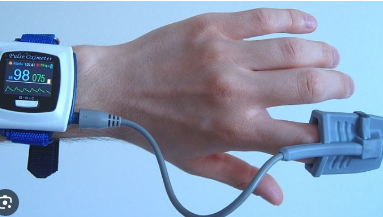
The wearable devices for medical are revolutionizing the way we treat ourselves in that they make it easier, more proactive and personalized. These devices include everything from fitness trackers to sophisticated health monitors are designed to provide users with live information on different areas of their wellbeing, which allows early detection and management of medical conditions.
What Are Wearable Medical Devices?
Wearable medical gadgets are devices that patients wear on their bodies to monitor and gather health-related information. These devices can be worn around the wrist, or as patches, or as clothing. They have sensors that monitor vital parameters such as blood pressure, heart rate blood sugar levels, glucose levels, and much more.
Types of Wearable Medical Devices
Fitness Trackers: These are possibly the most well-known type of wearable devices. They track your heart rate, physical activity, as well as sleep habits. The most popular examples are Fitbit or Garmin devices, which aid users set fitness goals and monitor their performance.
Smartwatches: Beyond timekeeping, smartwatches like the Apple Watch and Samsung Galaxy Watch offer advanced health monitoring capabilities. They can monitor ECG, blood oxygen levels and detect irregular heart rhythms.
Medical-Grade Monitors: These are more sophisticated devices for managing chronic illnesses. They include Continuous glucose monitors (CGMs) to monitor diabetes along with wearable pressure gauges. They provide precise readings and often send information directly to healthcare professionals.
Wearable ECG Monitors: Devices like the KardiaMobile are specifically designed to capture electrocardiograms (ECGs) and identify arrhythmias. They are especially beneficial for people with heart problems or who are at risk of heart disease.
Benefits of Wearable Medical Devices
Early detection: Wearable devices could help detect health concerns that could be present before they turn into serious. For example irregular heart rates that are that are detected by smartwatches could make users seek medical advice early.
Personalized Health Insights for Health: These devices provide users with personalized information that can be used to create lifestyle adjustments. For example fitness trackers could recommend adjustments to workout routines based on the level of activity.
Improved Patient Engagement offering continuous health monitoring, wearable devices encourage users to take an active role in regulating their health. This could lead to better adhering to treatment plans as well as healthier life choices.
Comfort: Wearable gadgets offer the convenience of real-time health monitoring without the necessity for frequent doctor visits. This is especially beneficial for people with chronic ailments who require regular monitoring.
Challenges and Considerations
Despite their advantages however, wearable medical devices have their own issues. Concerns like the accuracy of data security, privacy issues, and the need for regular calibration have to be addressed. In addition, although these devices may provide useful information, they’re an alternative to medical advice. Instead, they should only be utilized as part of regular health examinations.
In conclusion Wearable Medical Devicea significant advancement in the management of health for individuals. They come with a wide range of functions that enhance the early detection of illness, offer personalized insight, and boost the patient’s engagement. As technology advances and improve, these devices are expected to become more essential to our healthcare routines.

